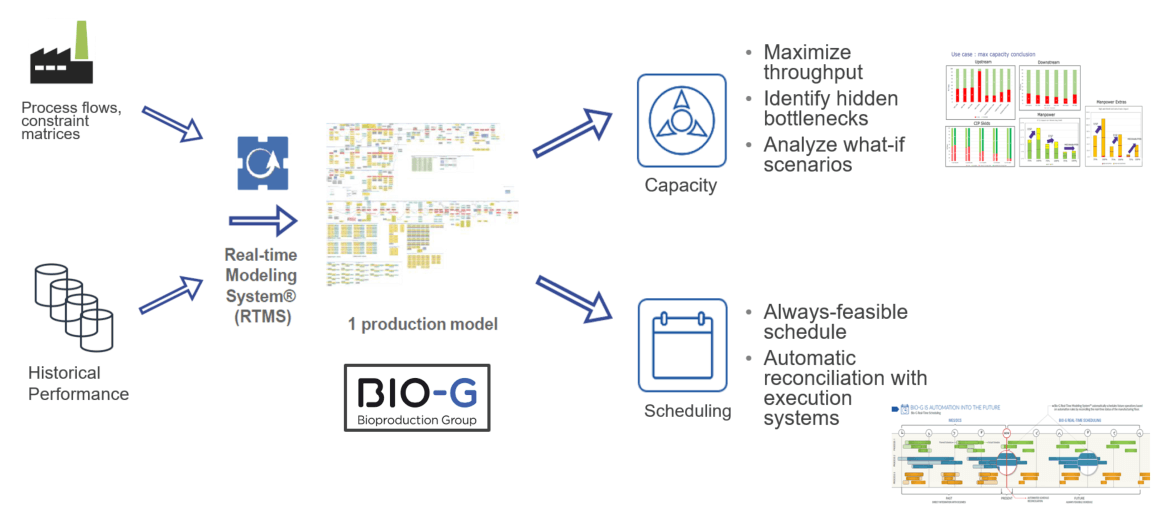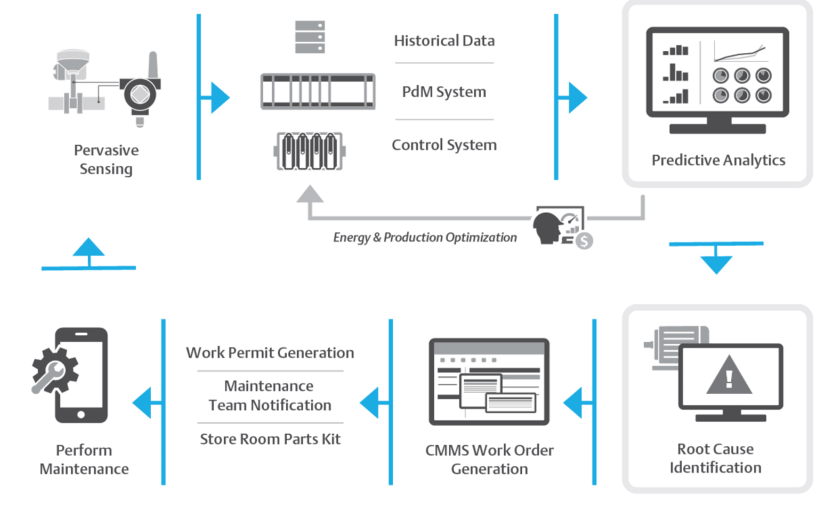Optimizing both continuous and batch-based processes have their unique challenges. I caught up with Emerson’s Alan Johnston who shared with me how technology advances in real-time modeling, adaptive scheduling and predictive maintenance are enabling successes in optimization for biopharmaceutical manufacturers who may have a combination of both types of processes in their operations.
The performance objectives are typically to ensure a high degree of assurance in facility and equipment performance and availability, to reduce the risk to production and product quality, and to support and maximize the flexibility in facility utilization.
For these biopharmaceutical manufacturers, the Bio-G Real-Time Modeling System (RTMS) software helps dynamically optimize operations and streamline technology transfer. Modeling helps identify production bottlenecks and then optimize production scheduling. It connects with the control system, manufacturing execution system and other production systems to understand the current operating state within a facility in order to identify production scheduling impacts based on these real-time conditions.
The reliability of the equipment is critical in optimizing production, especially as more of the manufacturing processes move from batch to continuous processing. Technology advances such as Industrial Internet of Things (IIoT)-based sensors have enabled a transition from preventive to predictive maintenance. The stream of asset health data available from these sensors combined with KNET process data analytics helps drive condition-based maintenance workflows to avoid unplanned downtime and slowdowns.
These predictive analytics combined with real-time scheduling optimize production by removing downtime. And targeted notifications through Plantweb Optics to operations and maintenance personnel whenever an anomaly is detected allows extra time to perform the maintenance before further degradation occurs with the equipment.
Plant personnel also have visibility for the resource schedules which allows technicians to schedule maintenance without disrupting the production during the white spaces—and notify the production team about the maintenance scheduled through the RTMS.
Together, real-time scheduling, predictive analytics and pinpoint alerts can reduce the delays, reduce inefficiencies, and help increase throughput and improve overall business performance.
Visit the Real-Time Modeling System, KNET Analytics and Plantweb Optics sections on Emerson.com for more on these technologies and ways to improve operational performance. You can also connect and interact with other experts in the biopharmaceutical industry in the Life Sciences group in the Emerson Exchange 365 community.







